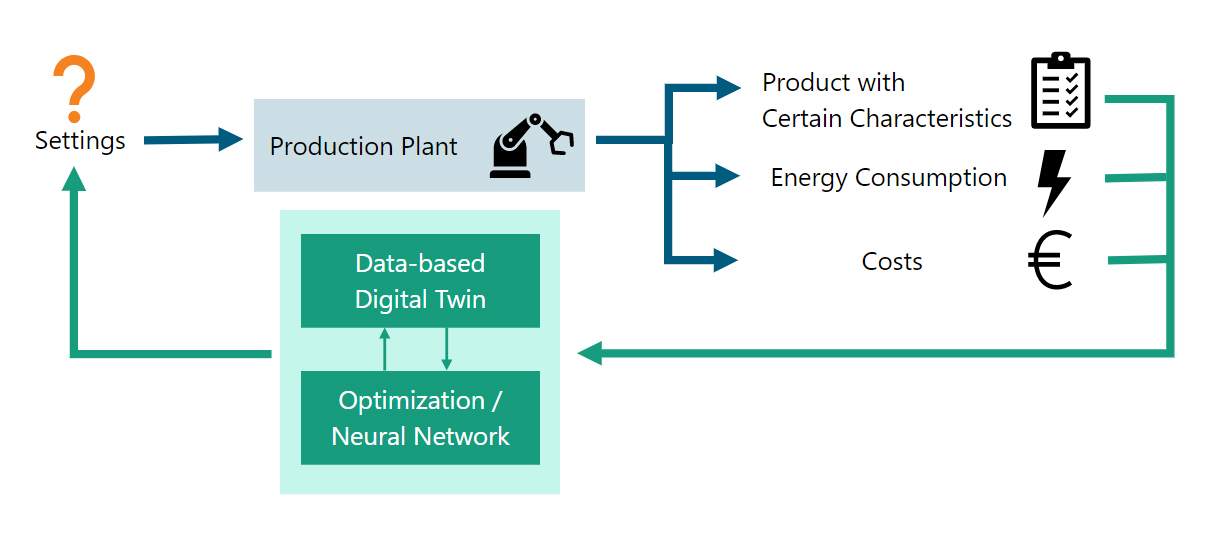The number of settings in extrusion processes is often quite large.
But which settings lead to the desired product with the lowest possible energy consumption, acceptable quality and low costs? Or perhaps you would like to exploit flexibilities, like varying the throughput, in order to link production to the electricity price in the sense of demand-side management.
Knowledge based on experience is often used to answer the question of appropriate settings. Although this approach has its justification, more precise analyses and mathematically sound methods–that also allow the inclusion of expert knowledge–can often optimize processes better.
To this end, we work with methods from the fields of:
- Machine Learning
- Artificial Intelligence
- statistical data analysis
The goal: to create a digital twin of the process and use it to optimize the process.
For example, we use neural networks to calculate an inverse mapping of the digital twin, which uses the desired process result (energy consumption, quality, costs) to calculate the required settings (recipe, temperatures, rotation speed, ...).

